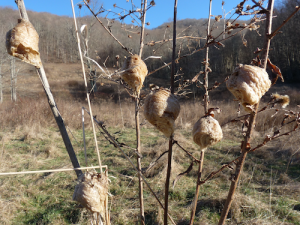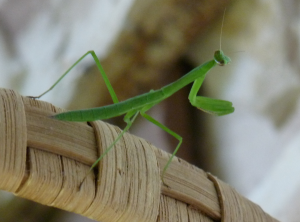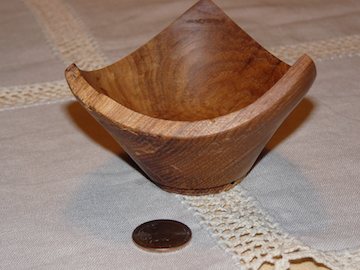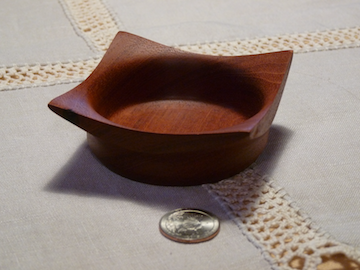Plant Now for Flowers Next Year!
Contributed by Harry
As the weather cools down, you may find yourself dreaming of NEXT year’s flower bouquets.
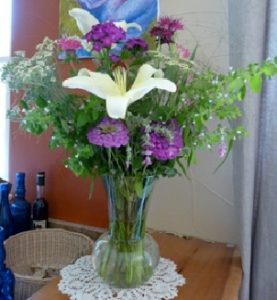 Now is the time to prepare for at least some of your future garden, because many plants, usually biennials (plants that have a two year life cycle), need a period of cold before they will bloom.
Now is the time to prepare for at least some of your future garden, because many plants, usually biennials (plants that have a two year life cycle), need a period of cold before they will bloom.

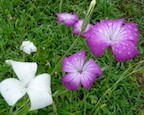 Plants like Agrostemma (corn cockles), Bupleurum, bachelor buttons, larkspur, Nigella, Saponaria (soapwort), Scabiosa (pincushion flower) that bloom in early spring can be planted now by direct seed. (Though it may be too late in some areas –check with your local cooperative extension office.) Follow the directions provided on the seed packet or catalog for soil depth and exact timing (larkspur, for example won’t germinate if the soil is too warm).
Plants like Agrostemma (corn cockles), Bupleurum, bachelor buttons, larkspur, Nigella, Saponaria (soapwort), Scabiosa (pincushion flower) that bloom in early spring can be planted now by direct seed. (Though it may be too late in some areas –check with your local cooperative extension office.) Follow the directions provided on the seed packet or catalog for soil depth and exact timing (larkspur, for example won’t germinate if the soil is too warm).
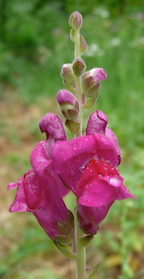
Other biennials/perennials, like foxglove, Echinacea, snapdragons, lupine and Rudbeckia (black-eyed Susan), Dianthus (sweet William) and others should have been started as seed back in mid- to late summer, but if you can find starts (young plants) at your local nursery, now is the time to get them in.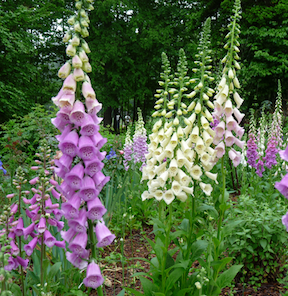
Yet other flowers like cosmos, zinnia, sunflowers and many more are annuals and are planted in spring. So dream on and make your plans for them in patience.
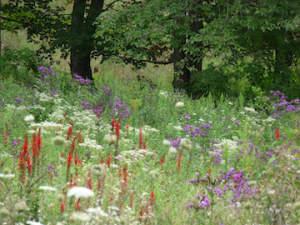 Or, if you would rather have Nature do your gardening for you in a ‘wilder’ setting, there are some native wildflowers with which you can assist.
Or, if you would rather have Nature do your gardening for you in a ‘wilder’ setting, there are some native wildflowers with which you can assist.
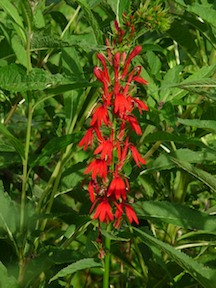 I am having a hard time thinking of a brighter red naturally occurring in wild Nature than a Cardinal Flower (Lobelia cardinalis) other than its namesake, a mature male Cardinal himself. The North American native Cardinal Flower grows in USDA Hardiness Zones 3 through 9 in wet, poorly drained places, though they also grow in drier conditions. (Cornell University claims they may survive even in Zone 2!)
I am having a hard time thinking of a brighter red naturally occurring in wild Nature than a Cardinal Flower (Lobelia cardinalis) other than its namesake, a mature male Cardinal himself. The North American native Cardinal Flower grows in USDA Hardiness Zones 3 through 9 in wet, poorly drained places, though they also grow in drier conditions. (Cornell University claims they may survive even in Zone 2!)
Cardinal Flower prefers full sun in cooler climates but needs part shade in the warmer part of its range. (They are very happy in the middle of our wet Zone 6 mountain meadow.)
To have your own intensely red insect attractant, collect the seed when the seed heads have matured (or purchase from a reputable seed source) and scatter the tiny seeds where you want them to establish. (Where you can easily see them, of course!) Scatter these seeds in late fall soon after they ripen or through early Spring since they also need to be “stratified” by cold to germinate. Do not cover them because, as with most tiny seeds, they need light to germinate.
Since Cardinal Flower is a short-lived perennial, let the plants reseed (which they should do naturally) to maintain the population.
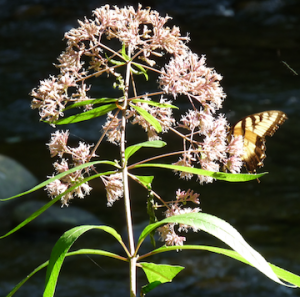 The tall pink-lavender topped Joe-Pye Weed (there are several Eutrochium species) with its whorled leaves is native to Zones 4 through 9. Growing and germinating conditions for Joe-Pye Weed are similar to Cardinal Flower. You might want to plant these as more of a ‘backdrop’ since these plants can get quite tall.
The tall pink-lavender topped Joe-Pye Weed (there are several Eutrochium species) with its whorled leaves is native to Zones 4 through 9. Growing and germinating conditions for Joe-Pye Weed are similar to Cardinal Flower. You might want to plant these as more of a ‘backdrop’ since these plants can get quite tall.
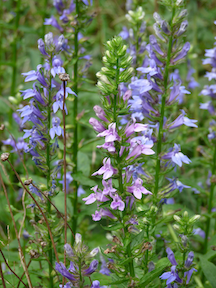 And Great Blue Lobelia (Lobelia siphilitica) is also native to Zones 2 through 9, from the Atlantic coast to the Rocky Mountains and blooms in late summer with the other two flowers above. Growing and germinating conditions are the same as above for this beautiful, though somewhat shorter, plant.
And Great Blue Lobelia (Lobelia siphilitica) is also native to Zones 2 through 9, from the Atlantic coast to the Rocky Mountains and blooms in late summer with the other two flowers above. Growing and germinating conditions are the same as above for this beautiful, though somewhat shorter, plant.
These three plants bloom in late summer (late July to early September around here) when the bees need to be collecting nectar for winter honey stores and before the later Asters and Goldenrod begin blooming.
Get out there and beautify the future!
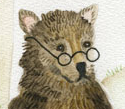
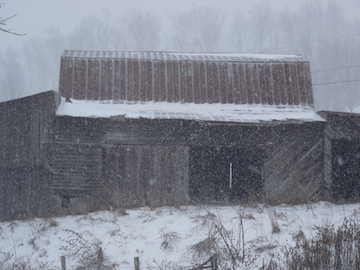
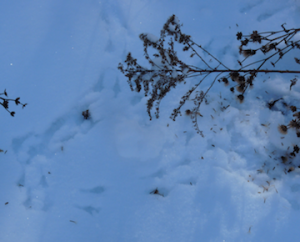
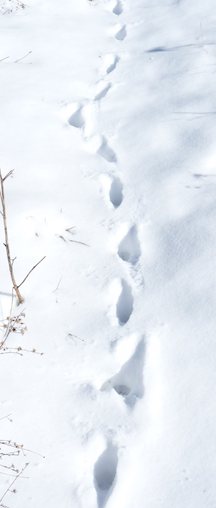 * After the clouds have dropped their frozen cargo and departed, the sun comes and makes every snowflake sparkle like the whole world is covered in diamond dust.
* After the clouds have dropped their frozen cargo and departed, the sun comes and makes every snowflake sparkle like the whole world is covered in diamond dust.


